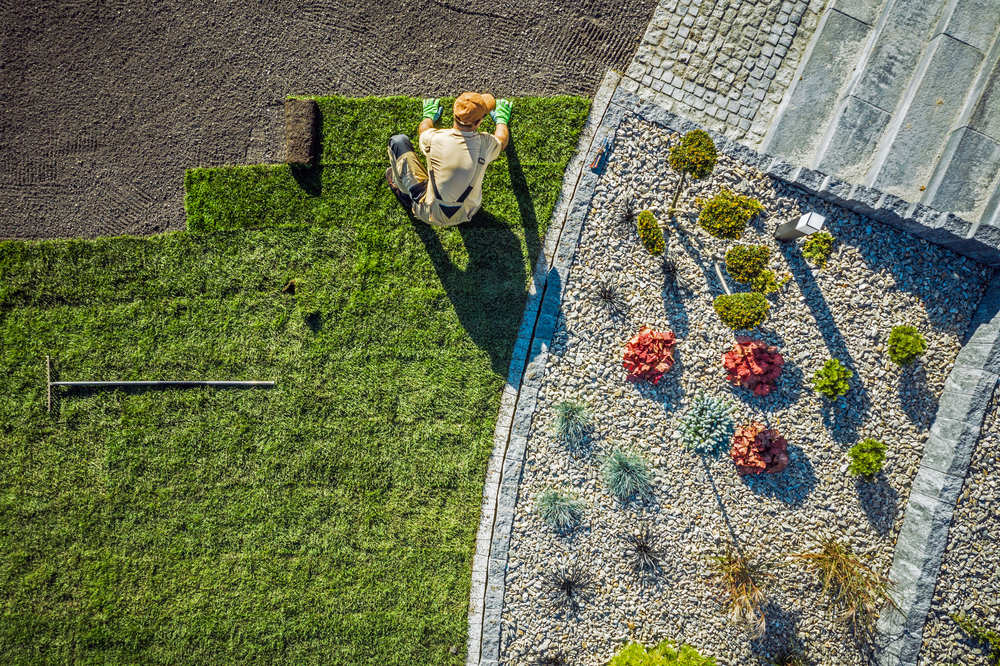When Is the Best Time to Lay Sod?
If you have decided to improve your commercial project or your yard with sod, the next step is to consider the most suitable time to lay it on the ground.
Sod comes in pallets or rolls and is laid on top of your soil. The tiny roots start growing in the soil and the sod slowly takes root. The advantage of sod is that you will have an instant lawn instead of waiting for the seeds to germinate.
Within a couple of weeks, your sod will have taken root and your yard will look lush and beautiful. This is particularly valuable in the case of commercial projects when you want to increase the appeal of your landscape and of the overall development.
The best time to lay sod is in late summer and early fall. Spring is also a good time, while warmer areas in Texas, California, and Florida are more blessed and you could even lay sod in the winter if there is no risk of frost.
To help ensure the survivability of your sod, just follow the tips below.
Fall Is the Best Time to Lay Your Sod
Of all the seasons, fall is the best time to lay your sod. The soil is still warm but extreme heat has subsided. The warm soil will help your sod take root quickly and establish itself before winter.
In addition, water won’t evaporate so much in fall and the first rains will help your sod grow. An added benefit of fall planting is that your sod will be firmly established before winter and will start growing abundantly to form a lush lawn once spring comes.
Spring Is the Second-Best Time to Lay Sod
You can also lay your sod in spring, as long the ground is not frozen and soil temperatures have reached the mid-50s Fahrenheit. You must, however, be certain that there will be no more frost coming and the sun has warmed the soil. We suggest you avoid early spring because unpredictable frosts and cold fronts could affect your sod’s health.
Spring planting is particularly well suited to warm-season grasses such as St. Augustine and Bermuda grasses.
Should I Lay Sod in the Summer?
Summer heat can take its toll on your sod. If you lay sod in the middle of summer, then your sod may display burn spots and yellowing of the blades. The grass blades may start wilting due to heat stress and lack of moisture.
Additionally, summer planting adds extra stress on your sod: when you water your sod and then the sun dries up the soil fast, the sod shifts between cycles of wet soil and dry soil very quickly and abruptly. This stresses the sod, which may stop growing and rooting as a result.
Finally, the combination of summer heat and moisture can create the perfect environment for fungus development. You then have to treat your lawn to eradicate the fungus.
Is Winter a Bad Time to Lay Sod?
Laying sod in winter could be particularly difficult in colder states with freezing temperatures. The soil will be frozen and the sod won’t take root.
Warmer parts of the country benefit from mild winters without any risk of frost. In this case, you could lay your sod, as long as you are sure there won’t be any frost for the next 6 to 10 weeks.
Also, it can be difficult to lay sod when it’s raining. The sod pallets will start shifting and moving out of place and the ground will be too soggy for you to walk and properly lay the sod. Wait for the rain to stop and for the ground to absorb any excess moisture before laying the sod.
Remember that sod is dormant in winter and you won’t see the lush lawn you would expect. You may have to wait until spring for your sod to grow and fill in your yard.
Choose Twinwood Farms for Your Sod
Here at Twinwood Farms, we are sod farmers. We grow sod under excellent weather conditions with the most advanced watering techniques. We will harvest your sod on the day of delivery to ensure it reaches you as fresh as possible.
Call us at 346-707-6024 or contact Twinwood Farms online and tell us about your lawn needs. Is it for a big sporting field? Are you looking for sod for your commercial development? We will guide you toward the best grass choice and deliver top-quality sod to your development.



